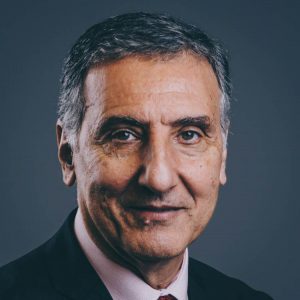
Amr Elnashai
Vice Chancellor and Vice President for Research and Technology Transfer, University of HoustonFellow of the British Royal Academy of Engineering Amr Elnashai is Vice Chancellor and Vice President for Research and Technology Transfer at the University of Houston, Texas. He manages the research enterprise of the University of Houston and the University of Houston System, with an annual research expenditure of $177M, and an IP income of $33.4M. The Division of Research has a total of about 180 employees and an annual operating budget of $100M. He is also in charge of the UH Technology bridge (innovation park) that occupies over 750,000 square feet of space, hosts 18 startups and several research-industry laboratories. Prior to his current position, he was Dean of Engineering at the Pennsylvania State University, and the Harold and Inge Marcus Endowed Chair of Engineering. As dean, Amr was responsible for all aspects of operation and leadership of the College of Engineering, with 11,000 students, 300 professors, 400 staff, $240M total budget, $137M research expenditure, over $210M endowment, 12 departments, 2 institutes and 20 research centers. He was member of the Academic Leadership Council and chairs the university Committee on Inclusive Penn State. Amr served as the chair of one of five Penn State research thrusts development committees, focused on Managing Resources. During his time as dean, Amr initiated a one-year MS and MEng program comprising 16 disciplinary and interdisciplinary degrees that are transforming the profile of the college and significantly expanding its graduate student populations.
He was previously head of the Department of Civil and Environmental Engineering at the University of Illinois at Urbana-Champaign (June 2009 to December 2013) and the Bill and Elaine Hall endowed professor. During his tenure as department head, research expenditure increased by 30% and graduate tuition income increased by more than 500%. He created three interdisciplinary majors, minors, MS and PhD programs that have attracted large percentages of students. He was Director of the NSF multi-institution interdisciplinary Engineering Research Center (ERC), MAE Center (2004-2009). He was also Director of the NSF Network for Earthquake Engineering Simulations (NEES) Laboratory at Illinois (2002-2009). His total research expenditure during his 13 years at Illinois was in excess of $20M. He was the professor with the highest research expenditure in this top-ranked department for 4 consecutive years (2006-2009).
Amr obtained his Bachelor of Science degree from Cairo University (1977), followed by MSc and PhD degrees from Imperial College (1980, 1984), University of London. Before joining the University of Illinois in June 2001, Amr was Professor of Earthquake Engineering and Head of Division at Imperial College (1985-2001).
Amr’s research interests are multi-resolution distributed analytical simulations, network analysis under stress and disruption, large-scale fire ignition and spread modeling, hybrid testing and field investigations of the response of complex networks and structures to earthquakes. He is currently the sole advisor of one PhD student at Penn State and serves on the PhD committee of another student at Illinois. He has produced more than 250 research publications, comprising 146 refereed journal papers and many conference papers, keynote and prestige lectures, research reports, 3 books and several book chapters, magazine articles and earthquake investigation reports. His Google-based H-index is 41, with 7760 citations. His highest downloaded publication is his report to FEMA/DHS on impact of earthquakes on the central USA, with 51,813 unique downloads from the Illinois digital database (IDEALS). Amr has supervised 46 Doctoral and over 100 Master of Science theses. Many of his students hold significant positions in industry, academia and government around the world.

